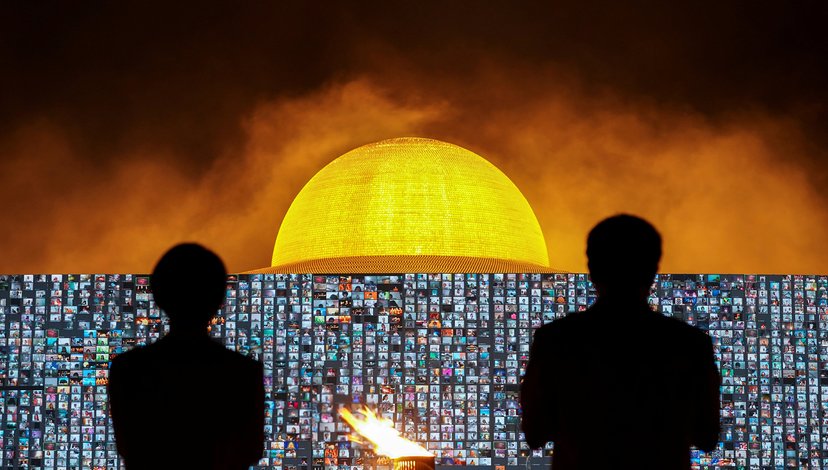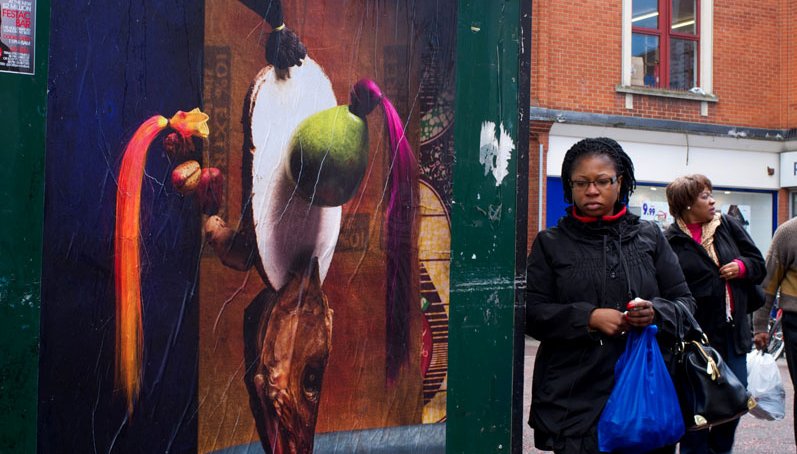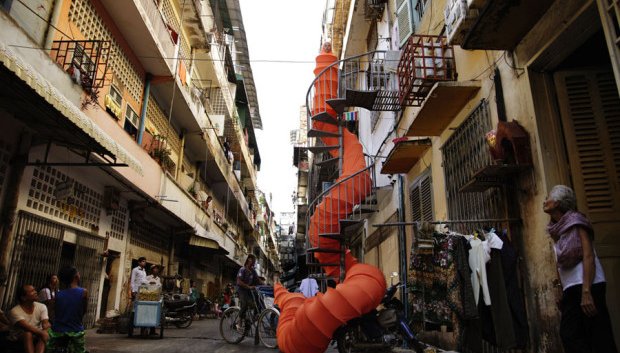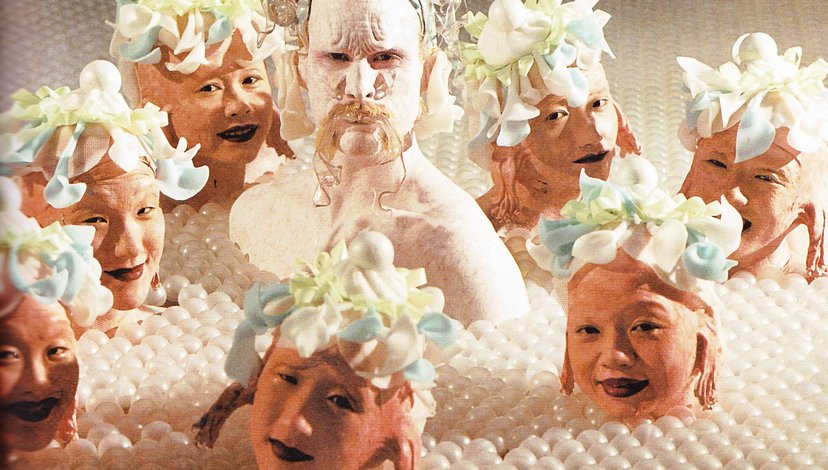ADS7: Convivial-ism
Studio Tutors: Lemonot – Sabrina Morreale & Lorenzo Perri

Allan Waxler, “Coffee seeks its own level”, 1991.
Over these past few years, we have all experienced an enormous acceleration toward the complete digitalisation of human interactions. While this process opened up new opportunities, it also increased the risk of stiffening social capabilities and flattening cultural and emotional singularities. The restrictions under which we lived stressed the limits of our domestic environments, putting into question the mechanisms that regulate the use of public spaces and our attitudes toward human interactions, proximity and contamination. The boundaries between hyper–connection and total isolation have never been so permeable.
Working at the intersection of these spatial and psychological dynamics, ADS7 operates as a platform to redesign contemporary architectural devices for a particular type of publicness: conviviality. We believe in the importance of a renewed, shared awareness of our human physicality. We will create gentle forms of resistance and participate and critically engage with communities. We will aspire to create projects with long-lasting impacts.
We understand conviviality as a collective need based on mutual care and deep seated habits. We believe conviviality should not only be embedded in the everyday, but also provides an exceptional architectural tool to negotiate and build novel inclusive frameworks. Creating projects in which different voices are opening to sharing active knowledge and pursuing exuberant wishes through fun, joy and spontaneous, yet designed, exchanges.

People pray as screens show devotees gathering via Zoom application during a ceremony to commemorate Makha Bucha Day at the Wat Phra Dhammakaya temple, following the spread of the coronavirus disease (COVID-19) in Thailand, 2021.
“A Declaration of Interdependence” is the title of the first Convivialist Manifesto signed in 2013 by 64 academics with very different political convictions, which were put aside in this joint communique to call–out the undesirable effects of contemporary societies. A second manifesto, which reacted to further political developments, such as the rise of illiberal regimes and policies, was signed in 2020 by 275 personalities from 33 countries. A nascent Convivialist International is emerging.
The two manifestos seek to extend previous uses of the term conviviality by making it into an -ism. While conviviality refers to the practice of living together (con-vivere), the -ism advocates for the systematisation of its social and political–theoretical impacts. Both terms speak of the fact we are all social beings that depend on one another. Our studio will highlight these connections by celebrating systems of cultural rituals, vernacular traditions, transformations, hidden practices, personal items and stories. ADS7: Convivial-ism will use these systems to make people convene and commune, and perform togetherness through playful practices of spatial activism.


Both images: Lorenzo Vitturi, “Dalston Anatomy”, 2013. The project - a photo-book, a month-long performance, and installations - is a visual celebration of the Ridley Road Market in East London.. Having lived in the area for seven years, Vitturi visited the market daily and witnessed the local community and its economy, deciding to capture the energy and traces of this place before it transformed beyond recognition.
Liminalities
ADS7: Convivial-ism will question all possibilities of coexistence. We will embrace the transgressions and liminal conditions that exist right now – social hierarchies being reversed or dissolved, continuities of tradition becoming uncertain, and identities being disoriented and reaffirmed. Taken from the Latin limen (or ‘threshold’), liminality has both spatial and temporal connotations. We are interested in questioning liminality as a period of time, as well as identifying the space it is executed within. We will work through forms of knowledge based on first–hand experience, together with the manipulation of empirical, physical or virtual findings. We want to understand our reactions to liminal experiences and the way it shapes our personalities and the environments we inhabit.
The studio will focus on moments of transition and the duration and temporalities of the ways we act and re-enact. The balance between short and long-term occupational strategies will play a crucial role in the development of our design projects. At times, we will deal with everything simultaneously, at others, we will work sequentially through a series of performances. Always prioritising the thresholds and connections between bodies, objects and architectural stage-sets.

Rosalie Yu, “A ritual of habits”, 2018. Over the course of two years, the artist explored her own relationship with sugar by digitally capturing all the sweets and desserts she has eaten, transforming them into a virtual reality experience and a 3D printed installation.
Intra-Active Spaces
Intra-action is a concept introduced by Karen Barad in her theories about Agential Realism. It describes the idea of entangled agency, which underpins our individual ability to act. When two entities intra-act, they do so in co-constitutive ways. This means that agency is not a preexisting given, instead it emerges from within the performance of our relationships. Together with the constant changes of our environments and our adaptations to these shifts.
ADS7 will adopt a similar approach towards architecture, humans and other-than-human actors, organic assemblages and inanimate matter. We understand all forms of agency evolve over time and are subject to – but are also capable of determining – contingencies. Our design projects will explore how we can make specific agents intra-act with buildings and environments in order to embrace new political, climatic and material conditions. We will experiment with ergonomics, choreography, responsive material assemblages, raw geometries and figurative inputs. In this work, ADS7 will attempt to redefine the agencies and impacts of convivial spaces. We will also explore our abilities – as architects and citizens – to produce and enable different forms of convivial engagement, which consider our behaviours, gestures, feelings and spatiality.

Kurt Schwitters, “Merzbau”, 1923-37. Schwitters’ art was a whole process, philosophy, and lifestyle, which he called merz—a nonsense word that became his kind of personal brand. The place where he merzed—his studio and family home—was his merz-building, or Merzbau. Over the years, it developed into a kind of abstract walk-in collage composed of grottoes and columns and found objects, ever-shifting and ever-expanding.
“I do” (repeat after me)
The concept of ‘performativity’ was first introduced by the theorist J.L. Austin in the mid–1950s. Austin used it to describe sentences that are also actions, and which change the social reality in which they occur. For example, pronounced in the right setting, the utterance “I do” transforms the speaker from being unmarried to married.
For ADS7, architecture is a form of action. It is also a performance and a type of commitment. We will use performativity as a tool to rewrite the architectural conditions of the everyday, inventing scripts and typological hybrids, and turning them into acts to be performed in front of multiple audiences. We will use the odd, the uncanny, the uncomfortable, the disproportionate, and the imaginative as guiding principles against the norm. We will perform exceptional and ordinary rituals, revealing their capacity to give structure, sense, play and convivial spatiality to our lives.


Both images: Anida Yoeu Ali, “The Buddhist bug”, 2014. The Bug is a fantastic saffron-colored creature that can span the length of a 40-metre bridge or coil into a small orange ball. It seeks to map a new spiritual and social landscape through its surreal existence amongst ordinary people and everyday environments.

Minjeong An, “The last elastic cord games that I played”, 2012.
By playing at the convergence of design, reality and representation, ADS7 will reject the conventions of architectural documents as simply a means to represent design projects. Instead, we will assemble new forms of 1:1 experience by embracing every technique available – low– and high–tech, immersive digital animations, physical drawings, curated soundscapes, inhabitable scenographies and time–based theatrical machines. Our design prototypes will not be contemplative objects, restricted to the confines of the College, but inserted within real urban contexts to become components of cinematic compositions.

Erik Kessels & Thomas Mailaender, “Jump Trump”, 2017.

ules-Louis Breton, Combination washer, 1925. The smallest of Breton’s motor-washer machines had a special feature. It combined washing dishes with washing laundry. Its distinguishing feature, separating it from American models, was that the plates and the basket rotated rather than the water moving around a stationary basket: the plates became the turbine.

Matthew Barney, “The Cremaster Cycle”, 1994-2002. is a series of five feature-length films, together with related sculptures, photographs, drawings, and artist's books. The series incorporates a multidisciplinary narrative that heavily references connections between real people, real places and real things personal to Barney himself, but are all fictionalised to some extent.
Live Project
In 2022-23, ADS7 will collaborate with Roberto Flore – founder of the DTU Skylab FoodLab in Copenhagen and former Head of R&D at the Nordic Food Lab, the open-source facility founded by René Redzepi of Noma. Working between London, Denmark and Sardinia, the live project will be framed through our convivial-ist actions and collectively developed as a playful take on food systems.
Tutors
Lemonot is a duo (Sabrina Morreale & Lorenzo Perri) that blends spatial and relational practices. They operate between architecture and performative arts, using them as tools to detect, celebrate and trigger the spontaneous theatre of everyday life. Through a wide range of media – pavilions, exhibitions, public stage-sets, inhabitable costumes and short films – they aim to construct the supporting spatial structures for things to happen.
They have taught together throughout Europe, in Latin America and at INDA in Bangkok. Their projects have been exhibited and awarded internationally: among others, at the Young Talent Architecture Award 2016, at the ATT19 Gallery in Bangkok, at the RIBA, at Vienna Design Week, at Mextropoli 2021 in Mexico City, at Milan Design Week and the Architecture Festival of Rome 2022.
Sabrina Morreale graduated from the Architectural Association and she’s currently a Studio Master at the AA Foundation in London.
Lorenzo Perri received a diploma with honours from the Architectural Association and he’s currently teaching at the University of Applied Arts in Vienna.